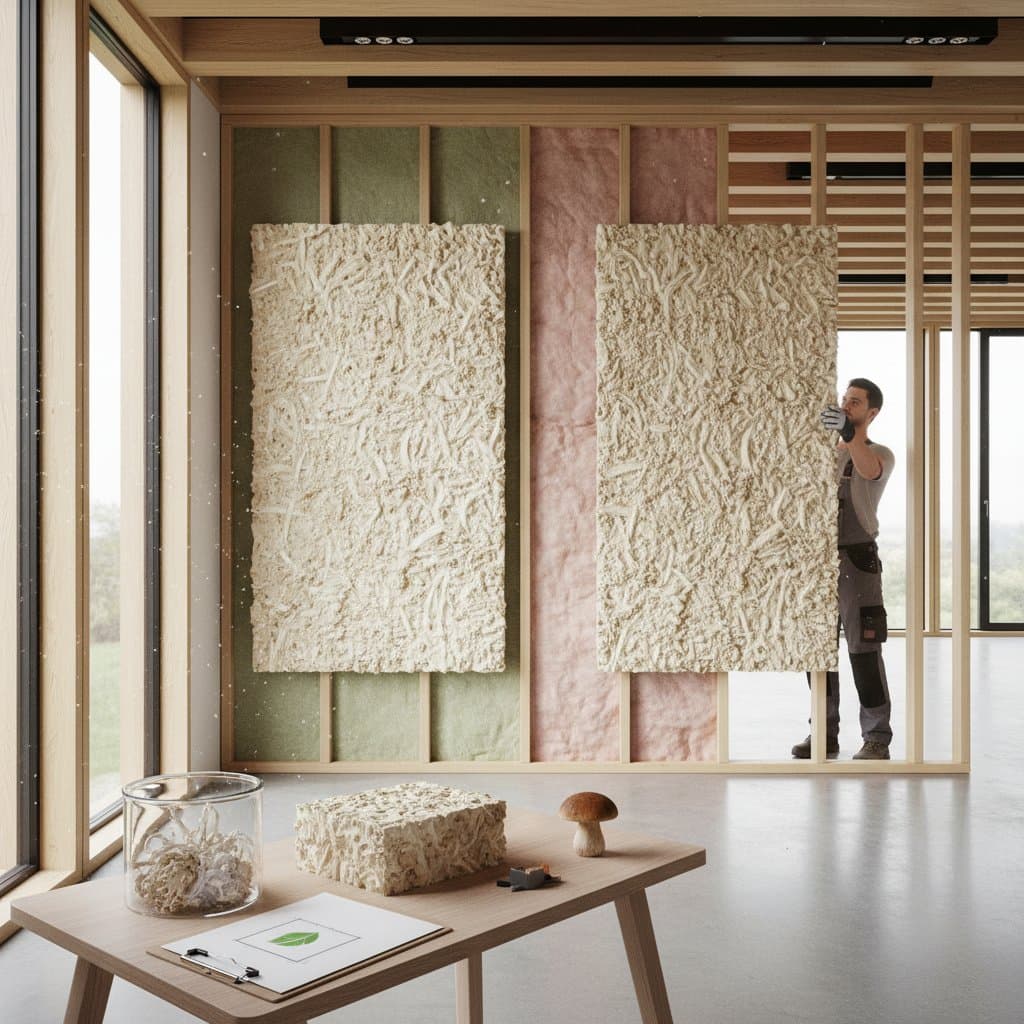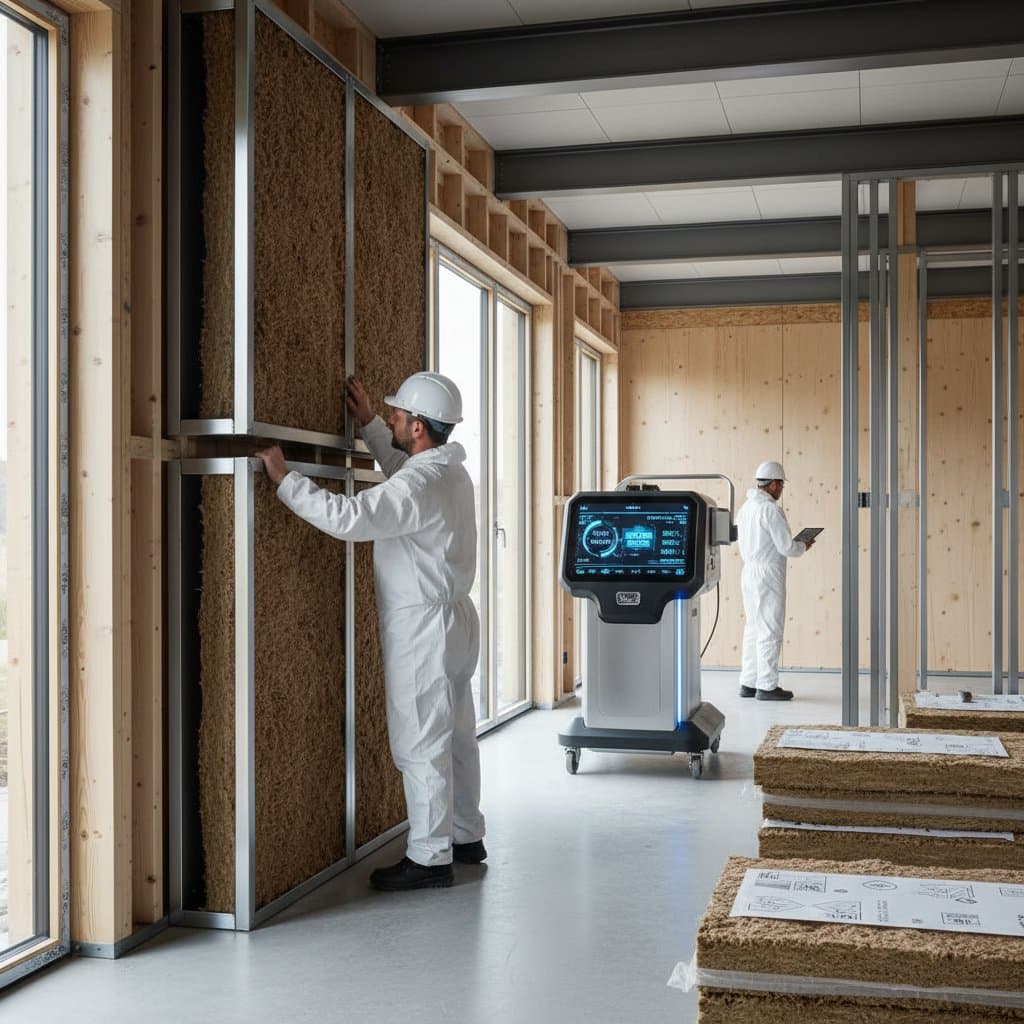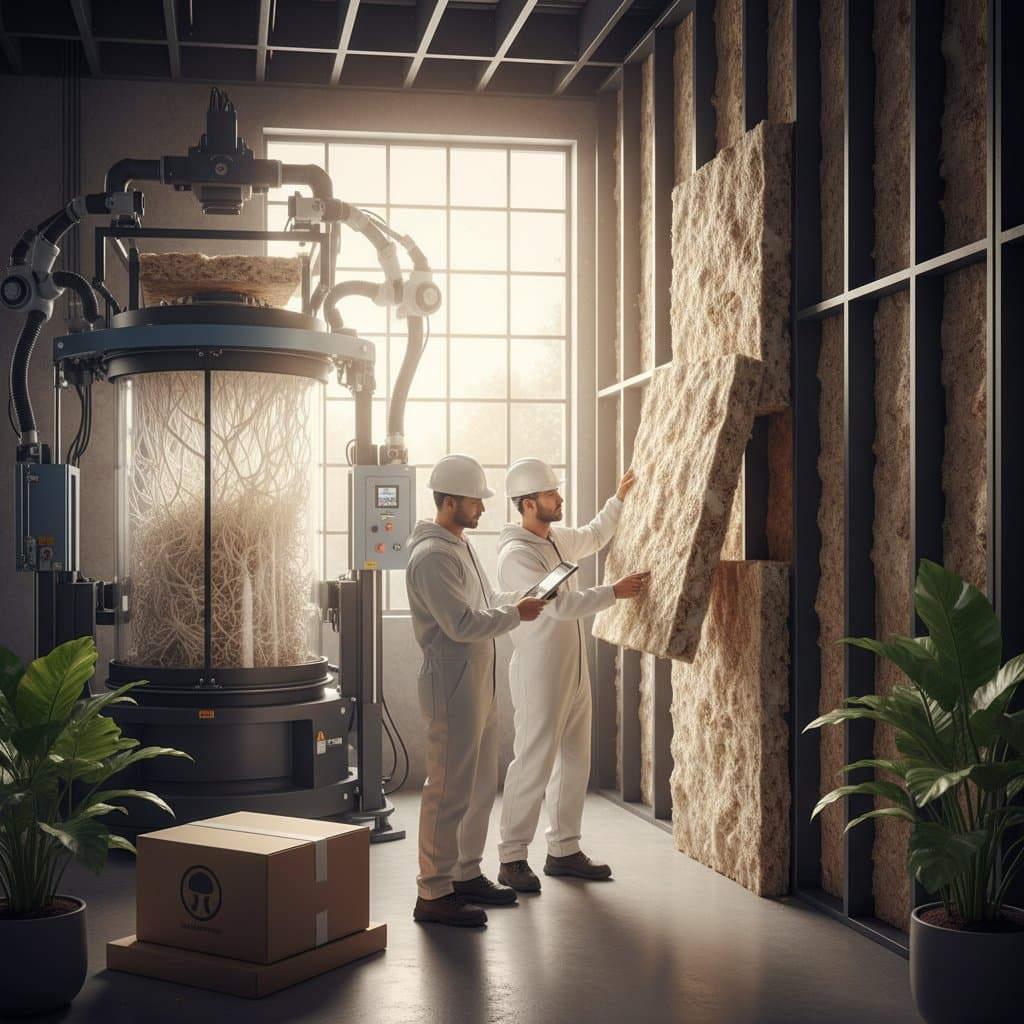Mushroom Insulation: A Natural Rival to Fiberglass
Imagine stepping into a home where the walls are insulated not with synthetic fiberglass or chemical-laden foam, but with a material cultivated from mushrooms. This innovative approach is not a distant dream, but a tangible reality in sustainable construction. Mushroom insulation, derived from mycelium, the root structure of fungi, is gaining momentum as a powerful, eco-friendly alternative that matches traditional materials in performance while prioritizing environmental responsibility.
Understanding Mycelium Insulation
Mycelium consists of the thread-like roots of fungi, which can be grown under controlled conditions to bind agricultural byproducts like corn husks or wood chips into a robust, lightweight material. This process takes mere days and demands far less energy than the production of conventional insulation. After reaching the desired density, the material undergoes heat treatment to halt growth, resulting in stable, durable panels or spray-applied forms ready for building applications.
Standout Performance Benefits
- Thermal Protection: Mycelium insulation delivers R-values of 3 to 4 per inch, standing shoulder to shoulder with fiberglass and foam in maintaining indoor temperatures.
- Fire Safety: Unlike many synthetic options, it chars rather than burns, offering inherent resistance to flames without added chemicals.
- Noise Reduction: Its fibrous composition excels at absorbing sound, making it a prime choice for urban environments or noisy areas.
- Moisture Control: Resistant to mold, it also helps regulate humidity in breathable wall systems, promoting healthier indoor spaces.
How It Stacks Up Against Traditional Materials
When deciding on insulation, builders and homeowners often weigh performance against cost and environmental impact. Here is a clear comparison of mycelium insulation with common alternatives:
| Feature | Fiberglass | Foam Board/Spray Foam | Mycelium Insulation |
|---|---|---|---|
| Thermal Performance | Good | Excellent | Good |
| Fire Resistance | Moderate | Varies, often treated | Strong |
| Environmental Impact | High energy use | Petroleum-derived | Low, renewable |
| Biodegradability | No | No | Yes |
| Cost | Low | High | Moderate to High |
While fiberglass holds an edge in upfront affordability, mycelium insulation shines with its minimal ecological footprint and solid performance across key metrics. Foam may offer superior thermal resistance in extreme conditions, but for most climates, mycelium proves more than adequate.
Financial Considerations for Adoption
Cost remains a significant factor in material selection. Currently, mushroom insulation carries a price tag about 15 to 20 percent higher per square foot than fiberglass. However, as production capacity expands, this difference is expected to narrow, making it more accessible to a wider market.
Beyond initial expenses, the long-term savings are compelling. Homes insulated with mycelium can reduce heating and cooling costs by 10 to 15 percent compared to those with subpar insulation. Additionally, since the material is fully biodegradable, disposal costs during renovations or demolitions are lower, and compliance with environmental regulations becomes simpler, adding further value to the investment.
Real-World Impact and Applications
From residential modular homes to commercial office spaces, mycelium insulation is already making its mark. Architects have integrated it into walls, ceilings, and even flooring layers, valuing its dual benefits of energy efficiency and acoustic control. In eco-conscious developments, it has become a hallmark of sustainable design.
One builder shared a perspective that resonates with many in the industry: "Using a material that can naturally decompose without harming the planet changes how we think about construction." This sentiment underscores a growing shift toward materials that align with both practical needs and ethical considerations.
Overcoming Barriers to Wider Use
Despite its promise, mycelium insulation faces hurdles that slow its mainstream adoption. Production facilities are still limited, leading to inconsistent supply for larger projects. The higher cost can deter budget-driven decisions, and in some regions, building codes have yet to recognize or approve its use, requiring additional advocacy and testing.
Nevertheless, progress is evident. Green building councils and research institutions are championing pilot programs to refine production methods and update regulations, paving the way for broader acceptance in the near future.
Bringing Mycelium Insulation Into Your Project
If you are intrigued by the potential of mushroom insulation, start by researching local suppliers or distributors specializing in sustainable building materials. Many offer pre-made panels, while some provide tailored solutions for specific designs. Consult with your contractor to ensure compatibility with your building systems and verify that local codes permit its use. Taking these steps can help integrate this innovative material into your next renovation or new build, aligning your project with cutting-edge sustainability practices.
Building a Greener Future With Every Choice
Opting for mycelium insulation goes beyond enhancing your home's efficiency; it reflects a commitment to reducing environmental strain in the construction industry. By selecting a material that grows naturally and decomposes harmlessly, you contribute to a cycle of building that respects the planet's resources. Each decision to prioritize sustainability helps shape a future where energy savings, reduced waste, and ecological balance are not just ideals, but everyday realities in the spaces we create and inhabit.









